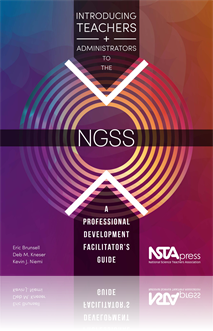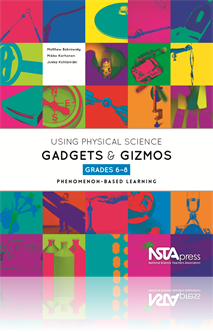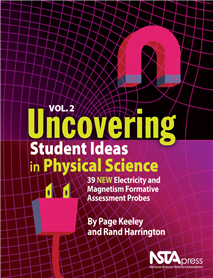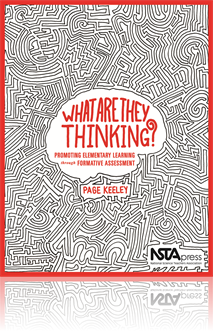All Book Chapters
Book Chapter
The purpose of this lab is for students to apply what they know about food webs, nutrient cycling, and the interdependence of organisms within an ecosystem to develop an explanation for “Why Is the Sport Fish Population of Lake Grace Decreasing in ...
Book Chapter
The purpose of this lab is for students to apply what they know about ecological communities, population growth, and the interdependence of organisms within an ecosystem to determine “How Has the Spread of the Eurasian Collared-Dove Affected Diffe...
Book Chapter
The purpose of this lab is to introduce students to the underlying mechanisms that influence how traits are inherited and to determine ”Why Are the Stem and Leaf Color Traits of the Wisconsin Fast Plant Inherited in a Predictable Pattern?” The la...
Book Chapter
The purpose of this lab is to introduce students to the chromosomal basis of inheritance and the nature of chromosomal genetic disorders to determine ”How Do Two Physically Healthy Parents Produce a Child With Down Syndrome and a Second Child With ...
Book Chapter
The purpose of this lab is to introduce the concept of deoxyribonucleic acid (DNA) and to define ”What Is the Structure of DNA?” The lab explains how genetic information is stored, transferred, and conserved and also gives students an opportunit...
Book Chapter
The purpose of this lab is to introduce students to the process of meiosis at the chromosomal level to determine ”How Does the Process of Meiosis Reduce the Number of Chromosomes in Reproductive Cells?” It also gives students an opportunity to d...
Book Chapter
The purpose of this lab is to give students an opportunity to apply what they know about the inheritance of traits to solve a problem ”Are All of Mr. Johnson’s Children His Biological Offspring?” This lab also gives students an opportunity to ...
Book Chapter
The purpose of this lab is to give students an opportunity to apply what they know about the inheritance of traits to determine “Which Model of Inheritance Best Explains How a Specific Trait Is Inherited in Fruit Flies?” This lab also gives stu...
Book Chapter
Biodiversity and the Fossil Record
The purpose of this lab is to introduce students to the history of life on Earth and to help them discover “How Has Biodiversity on Earth Changed Over Time?” This lab also gives students an opportunity to use an existing data set and mathematics...
Book Chapter
The purpose of this lab is to introduce students to the effects of predation and explain “Why Will the Characteristics of a Bug Population Change in Different Ways in Response to Different Types of Predation?” Students will also have an opportun...
Book Chapter
The purpose of this lab is for students to apply what they have learned about the theory of descent with modification to explain “Does Mammalian Brain Structure Support or Refute the Theory of Descent with Modification?“ This lab also gives stud...
Book Chapter
The purpose of this lab is to have students apply what they know about natural selection to explain the process of allopatric speciation and to discover “Why Does Geographic Isolation Lead to the Formation of a New Species?” It also gives stude...
Book Chapter
The purpose of this lab is for students to apply their understanding of evolutionary relationships or phylogeny to determine ”How Are Humans Related to Other Members of the Family Hominidae?” It also provides students with an opportunity to anal...
Book Chapter
The purpose of this lab is for students to apply their understanding of protein synthesis, descent with modification, and cladograms to identify “How Are Whales Related to Other Mammals?” They will also have an opportunity to access and use an...
Book Chapter
The activities in this chapter provide an introduction to the NGSS. Activity 1 allows educators to explore the progressions of NGSS to begin understanding the structure of NGSS....
Book Chapter
Facilitating Professional Development Using This Book
This chapter discusses how to use the book to plan professional development. It includes a description of two “strands” of work that schools need to engage in during the implementation process, provides guideposts for effective professional devel...
Book Chapter
This chapter identifies a series of challenging questions and issues that arise frequently during professional development related to the Next Generation Science Standards (NGSS). Through discussions, reflections, and workshop evaluations, we identif...
Book Chapter
This chapter provides suggestions for administrators as they consider how to lead and support implementation of the Next Generation Science Standards (NGSS). It’s important to remember that change happens in a very thoughtful, planned way. Implemen...
Book Chapter
Exploring the Practices and Crosscutting Concepts
This chapter provides a series of activities to help science teachers understand the three dimensions of the Framework for K–12 Science Education—science and engineering practices, crosscutting concepts, and disciplinary core ideas—and how they...
Book Chapter
Supporting Science Learning for All Students
This chapter includes activities that explore the Next Generation Science Standards (NGSS) Appendix D, “All Standards, All Students” and the case studies included with that appendix. These classroom case studies describe instructional approaches ...
Book Chapter
Fostering Discussion About Curricular Decisions
This chapter focuses on beginning discussions related to curricular decisions including course mapping, designing essential questions and performance assessments, and using the Next Generation Science Standards (NGSS) to plan units of instruction. Th...
Book Chapter
Connecting NGSS and the Common Core State Standards
This chapter introduces educators to the connections between the Next Generation Science Standards (NGSS) and the Common Core State Standards (CCSS) in both mathematics and English language arts. The activities provided here will allow participants t...
Book Chapter
Lab 12. Explanations for Animal Behavior: Why Do Great White Sharks Travel Over Long Distances?
The purpose of this lab is to introduce students to many of the theories and concepts used by biologists to study and explain the behavior of animals....
Book Chapter
Sound is one example of wave motion and the ability to hear sound is based on the principle of resonance. In this chapter’s activities, you will learn about standing waves, resonance, and an interesting wave phenomenon known as the Doppler effect. ...
Book Chapter
Color theory is the aspect of physics that can explain the colors on your computer screen or in your printer. Visible light can be split into different wavelength regions that are called colors. The color of an object is usually the color that the su...
Book Chapter
Thermodynamics is a very important part of physical science. When discussing thermodynamics, we can explore heat, thermal expansion, and insulation, as well as changes in state, thermal equilibrium, and thermal energy. In this chapter, the experiment...
Book Chapter
Water can be used to help become familiar with the concepts of density and buoyancy. For example, lifting rocks from the bottom of a lake is easier than moving them on the beach. While in the water, the buoyant force makes the rocks feel lighter. In ...
Book Chapter
In order to discuss mechanical interactions, we need to understand forces and motion. In physical science, we can make use of all three of Newton’s laws of motion in a variety of situations. Energy analysis encompasses all areas of physics. In mech...
Book Chapter
This chapter features gadgets and gizmos that make science look like magic. You don’t have to be a magician to perform these tricks—all you need is physics. Each student can pick a gizmo and prepare a performance for the rest of the group. Rememb...
Book Chapter
The purpose of this assessment probe is to elicit students’ ideas about series circuits. The probe is designed to determine what students think will happen to the brightness of light bulbs as more light bulbs are added to a circuit. This free sampl...
Book Chapter
Two-dimensional (2D) motion means motion that takes place in two different directions (or coordinates) at the same time. The simplest motion would be an object moving linearly in one dimension. An example of linear movement would be a car moving alon...
Book Chapter
Students have early childhood experiences with basic force concepts well before they encounter the word force in the science classroom. For example, it doesn’t take long for a child to figure out that pushing or pulling on a toy will cause it to mo...
Book Chapter
The purpose of this assessment probe is to elicit students’ ideas about electric forces. It is designed to reveal whether students recognize that electric forces can act at a distance without direct contact. The probe is best used with elementary s...
Book Chapter
The purpose of this assessment probe is to elicit students’ ideas about electric charge when they rub balloons on their hair. It is designed to reveal whether students recognize that objects charged in the same way repel each other. The probe is be...
Book Chapter
Can It Be Electrically Charged?
The purpose of this assessment probe is to elicit students’ ideas about electric charge. It is designed to reveal students’ thinking about the types of materials that can be electrically charged so it’s not important that they know which types ...
Book Chapter
What Happens When Your Bring a Balloon Near a Wall?
The purpose of this assessment probe is to elicit students’ ideas about electrical interactions. It is designed to find out how students visually represent electrical interactions. The most common representation used to account for electric interac...
Book Chapter
The purpose of this assessment probe is to elicit students’ ideas about conductors and insulators of electric charge. It is designed to determine whether students can distinguish between objects that allow the charge to move (conductors) and object...
Book Chapter
Does the Example Provide Evidence?
The purpose of this probe is to elicit students’ ideas about charged objects. It is designed to reveal whether students recognize that one can only make a limited conclusion about charge during an interaction where objects are attracted to each oth...
Book Chapter
Where Can You Find Electric Charge?
The purpose of this assessment probe is to elicit students’ ideas about electric charge. It is designed to determine whether students recognize that electrically charged particles are found in all matter. Its important students know that sunlight r...
Book Chapter
Where Does the Charge Come From?
The purpose of this assessment probe is to elicit students’ ideas about electric charge. It is designed to reveal students’ thinking about where charge comes from. The example provided is when sliding down a plastic slide on the playground and a ...








